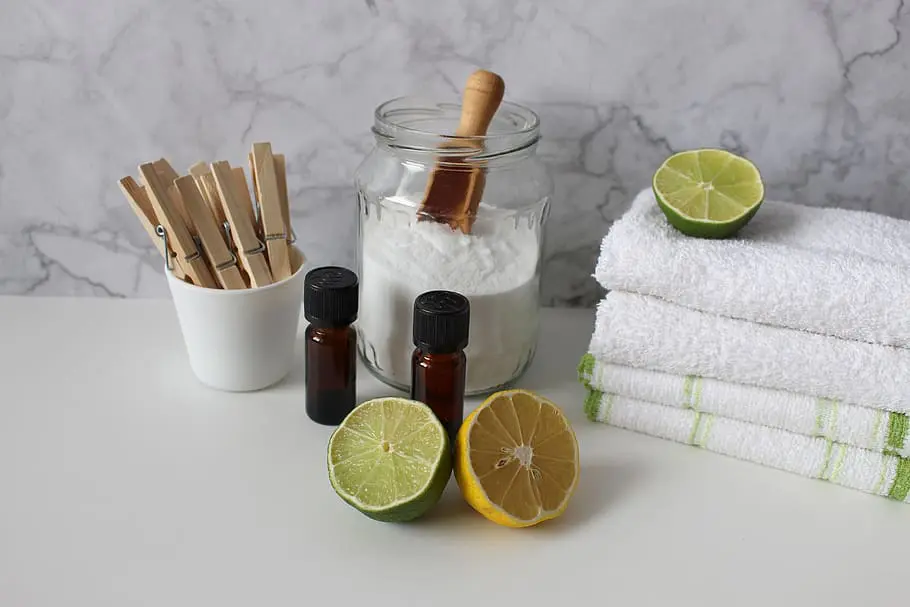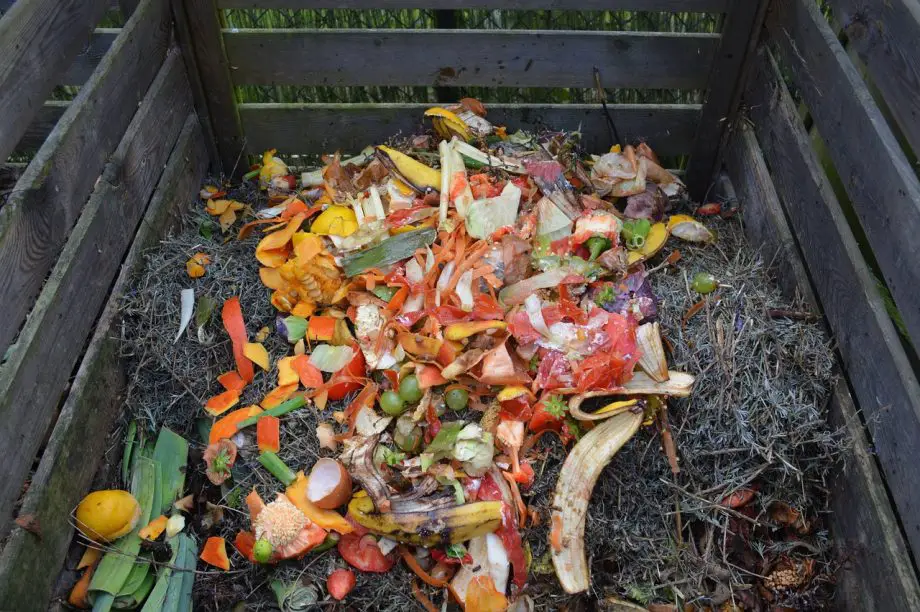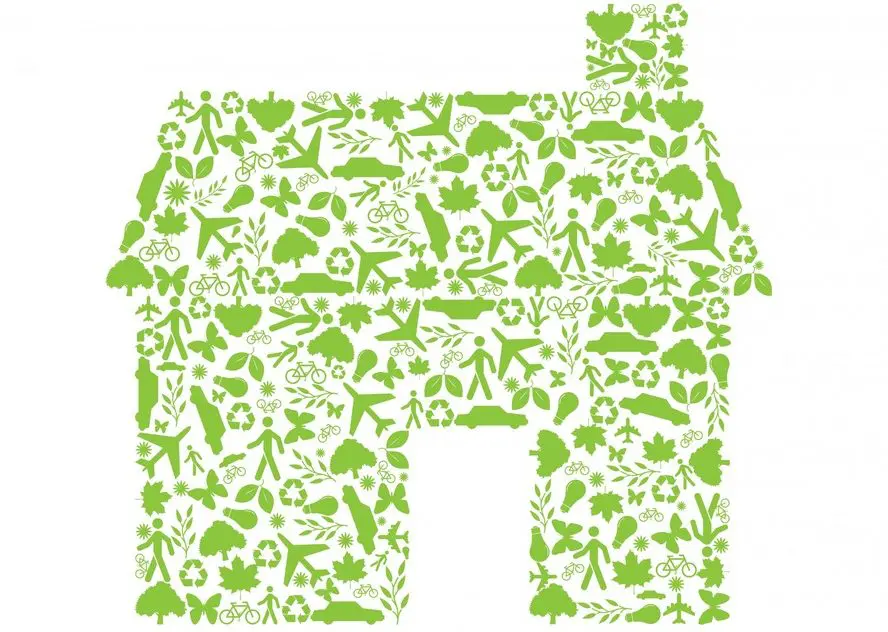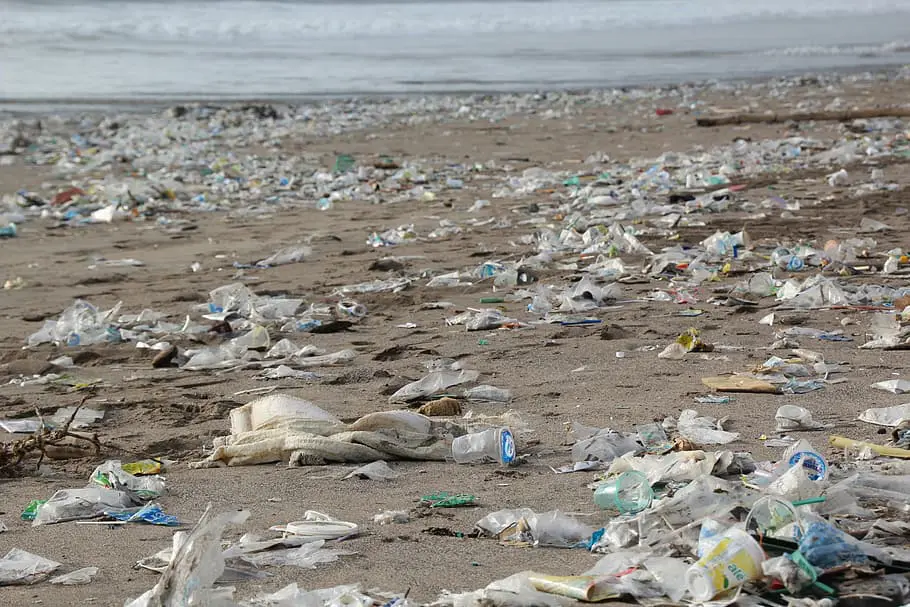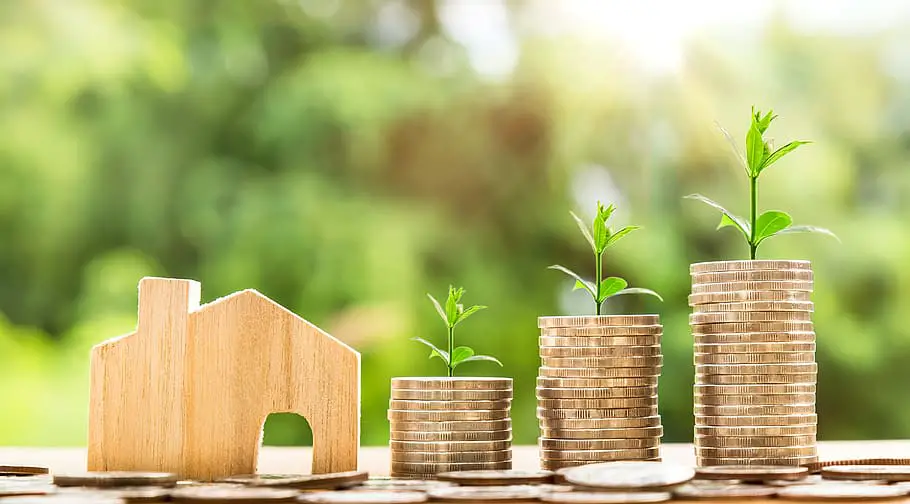
Explore easy and impactful sustainable living ideas for a greener life. Start making simple changes that benefit both you and our planet. Dive in today!
Imagine if you could make a difference to the planet and its future just by changing the way you live day to day. Intriguing, right?
With these sustainable living ideas, this aspiration can become your reality.
We’re about to embark on an exciting journey, where every choice you make can contribute to a healthier planet.
From your kitchen to your closet, from your garden to your office – no corner of your life will be left untouched by these green transformations.
Sustainable Living Ideas
Are you keen to embrace a greener lifestyle but aren’t sure where to start? Well, you’re in the right place!
This guide is packed with practical, easy-to-adopt sustainable living ideas.
From reducing your carbon footprint to creating a zero-waste kitchen, we’ve got all the tips and tricks you need to make eco-friendly living second nature.
So let’s dive in and start making a difference, one sustainable step at a time.
Sustainable Living Tips for Beginners
Embarking on a journey towards sustainability? Fantastic!
Sustainability can seem overwhelming at first, but rest assured, it’s simpler than you might think.
This section will introduce sustainable living tips for beginners. We’ll cover everything from small daily changes to fundamental lifestyle adjustments.
Remember, it’s not about perfection but about making consistent efforts. Ready to embark on a more eco-conscious lifestyle? Let’s dive in!
Starting with Small, Manageable Changes
When it comes to living more sustainably, the journey of a thousand miles truly does start with a single step.
It might be as simple as swapping out your disposable coffee cup for a reusable one, or perhaps turning off the lights when you leave a room.
Maybe it’s walking to the store instead of driving when you only have a few items to pick up.
Small changes like these are easy to implement, but their effects can be substantial over time.
The key is to start where you are and do what you can. Every bit counts!
Importance of Building a Sustainability Mindset
Sustainable living isn’t just about what you do, it’s also about how you think.
Shifting towards a sustainability mindset means considering the environmental impact of your daily decisions.
It’s about recognizing that we are part of a broader ecosystem, and our actions have ripple effects on the world around us.
This mindset shift might seem big, but remember, it’s a journey. Start by asking yourself questions like: Do I need to buy this, or is it a want?
Can I buy this secondhand or borrow it instead? Could I walk or cycle rather than drive?
As you gradually incorporate these sustainable living ideas into your decision-making process, you’ll find that sustainable living becomes second nature.
It’s not just a set of actions, but a way of viewing the world.
Reducing Carbon Footprint at Home

Do you ever look around your home and wonder how you could make it a little greener? You’re not alone.
Many of us are starting to realize the significant role our homes play in our overall carbon footprint.
But don’t worry, turning your home into an eco-friendly haven is easier than you think!
We’re here to guide you through the process of reducing your carbon footprint at home, showing you that small changes in the way you live can lead to big impacts on our planet.
So, let’s roll up our sleeves and get started, shall we?
Switching to Energy-Efficient Appliances
Have you ever thought about how much energy your household appliances consume? You might be surprised!
Traditional appliances can be real energy hogs, but luckily there’s a more sustainable option.
Energy-efficient appliances might cost a bit more upfront, but they can save you a significant amount of money and carbon emissions in the long run.
Whether it’s an energy-saving refrigerator, a high-efficiency washer, or LED light bulbs, these greener options consume less electricity and perform just as well, if not better, than their less-efficient counterparts.
Plus, they often come with the added bonus of being quieter and more durable.
So next time you need to replace an appliance, consider going for an energy-efficient model. Your wallet and the planet will thank you!
The Role of Insulation and Renewable Energy Sources
Insulation might not be the most glamorous topic, but when it comes to reducing your carbon footprint at home, it’s a game-changer.
Proper insulation can significantly decrease the amount of energy needed to heat or cool your home, leading to lower energy bills and fewer greenhouse gas emissions.
And don’t forget about doors and windows. Drafts can be a major source of heat loss!
As for renewable energy, it’s an exciting frontier in the quest for a more sustainable home.
Solar panels, for example, are becoming increasingly affordable and can drastically reduce your reliance on fossil fuel-derived electricity.
Plus, in some regions, you can even sell excess electricity back to the grid!
Alternatively, consider switching to a green energy provider that sources electricity from renewable sources.
It’s a great step towards making your home part of the solution to climate change, rather than part of the problem.
Conserving Water in Daily Life

Ever thought about how much water we use each day? Between washing, cooking, cleaning, and maintaining our yards, water is an essential part of our daily lives.
But with increasing water scarcity, it’s more important than ever to be mindful of our water usage.
There are countless easy and effective ways to conserve water in our everyday routines. And guess what?
By adopting these habits, you’ll not only be helping our planet, but you’ll likely see a decrease in your water bills too.
Ready to dive into the world of water conservation? Let’s go!
The Effectiveness of Low-Flow Appliances
If you’re interested in conserving water at home, one of the first places to look is your appliances and fixtures.
Did you know that a conventional showerhead uses approximately 2.5 gallons of water per minute?
That can add up quickly, especially in a busy household! By switching to a low-flow showerhead, you could cut that amount in half without even noticing a difference in water pressure.
The same goes for faucets and toilets. Low-flow models use significantly less water but do the job just as effectively.
So next time you’re upgrading your appliances or fixtures, why not consider a more water-efficient option?
It’s a simple switch that can make a big difference!
Practices for Efficient Outdoor Water Usage
Watering our yards and gardens can use a surprisingly large amount of water.
But don’t worry, you don’t have to let your green spaces go brown to save water.
There are plenty of ways to be more efficient with outdoor water usage!
For starters, try to water early in the morning or late in the evening when the sun’s heat won’t evaporate the water as quickly.
If you have a lawn, consider letting it grow a little longer. Longer grass shades the soil, reducing evaporation and promoting deeper root growth.
And why not try collecting rainwater in a barrel for watering plants? It’s better for your plants and saves valuable tap water.
By adopting these simple habits, you can keep your outdoor spaces looking lush and beautiful while using less water. That’s a win-win!
Eco-Friendly Cleaning Products for Home
We all want our homes to be sparkling clean, but have you ever stopped to think about what’s actually in those cleaning products you’re using?
Traditional cleaning supplies can often be packed with harsh chemicals that aren’t great for you or the environment.
But here’s the good news, you can achieve a spotless home while still being kind to our planet!
With a world of eco-friendly cleaning products at your fingertips, it’s never been easier to make the switch.
Ready to clean green? Let’s dive into the world of eco-friendly cleaning products and how they can make a difference in your home and our world.
Advantages of Natural, Biodegradable Ingredients
We all want a clean home, but not at the cost of our health or the planet’s.
That’s where natural, biodegradable cleaning products come in. Made from plant-based ingredients, these products are designed to be tough on dirt and grime, but gentle on you and the environment.
They break down safely and naturally, unlike many traditional cleaning products, which can linger in the environment and harm wildlife.
Plus, they’re often free from synthetic fragrances, making them a great choice for anyone sensitive to strong smells or allergies.
And let’s not forget one of the best parts is many of these products are packaged in recycled and recyclable materials, reducing the amount of plastic waste we generate.
All in all, making the switch to cleaners with natural, biodegradable ingredients is a move you can feel good about!
DIY Cleaning Solutions with Common Household Items
Did you know you can make effective, eco-friendly cleaning products with ingredients you probably already have in your kitchen?
That’s right, common items like vinegar, baking soda, and lemon juice make fantastic natural cleaners.
For example, a simple mix of vinegar and water can be used to clean windows and mirrors, while a paste of baking soda and water is great for tackling tough stains on surfaces.
Lemon juice is excellent for removing hard water stains and can leave your home smelling fresh and clean.
Making your own cleaning products isn’t just eco-friendly, it’s also cost-effective and allows you to avoid the synthetic fragrances and dyes found in many commercial cleaners. Plus, it’s fun!
Why not give it a try and see for yourself?
Benefits of a Plant-Based Diet for the Environment

Thinking about exploring a plant-based diet? Fantastic!
Not only can it be a great choice for your health, but it also offers significant benefits for our planet.
If you’re worried about missing your favorite foods, don’t be! Today’s world of plant-based eating is vibrant, diverse, and downright delicious.
You’ll discover an exciting range of fruits, veggies, grains, and proteins that are sure to satisfy your taste buds.
Plus, you’ll be doing your part to conserve resources and combat climate change.
Ready to dig into the environmental benefits of a plant-based diet? Let’s jump in!
The Environmental Impact of Reducing Meat Consumption
Reducing meat consumption can have a significant positive impact on the environment.
Did you know that livestock production contributes to nearly 14.5% of all human-made greenhouse gas emissions?
Or that it takes a staggering amount of water to produce just one pound of beef?
By choosing plant-based foods more often, you can help to lower these figures.
Even small changes can make a big difference. For example, having a Meatless Monday each week is a fun and accessible way to start.
Plus, with so many delicious plant-based recipes available, you’ll never be short on tasty meal ideas!
Other Health and Financial Benefits of a Plant-Based Diet
There’s more to a plant-based diet than just environmental benefits, though. It can also be great for your health and your wallet!
Eating a diet rich in fruits, vegetables, whole grains, and legumes can provide your body with a wealth of nutrients, and many people find they feel more energetic and vibrant on a plant-based diet.
Plus, it’s often associated with lower risks of heart disease, high blood pressure, and type 2 diabetes.
Financially, a plant-based diet can be quite cost-effective. While certain specialty vegan products can be pricey, staples of a plant-based diet, like grains, beans, fruits, and veggies, are often some of the most economical items at the grocery store.
You may even find that you’re saving money while eating healthier and more sustainably!
Sustainable Alternatives to Single-Use Plastics

We’ve all heard the saying, reduce, reuse, recycle, but have you considered how it applies to your plastic use?
Single-use plastics have become a major environmental issue, with plastic bags, straws, and bottles often ending up in our oceans and landfills.
But there’s good news. There are a wealth of sustainable alternatives available!
From reusable shopping bags to stainless steel water bottles, these alternatives are not only better for the environment, but they’re also often more stylish and functional too.
Ready to embark on a journey towards less plastic in your life?
Let’s explore some fantastic sustainable alternatives to single-use plastics.
Embracing Reusable Items for Daily Use
The convenience of single-use plastics can be hard to resist, but making a switch to reusable items is a significant step you can take towards a more sustainable lifestyle.
Consider replacing plastic water bottles with sturdy reusable bottles made of stainless steel or glass.
Not only will it keep your drinks cool or hot for longer, but it’s also a much healthier and eco-friendly choice.
Likewise, bring your own coffee cup to the café – some even offer discounts as an incentive!
And don’t forget about reusable shopping bags. They’re much more durable than their plastic counterparts, and you can find them in a variety of fun designs to suit your style.
These small swaps can make a big difference over time!
Exploring Eco-Friendly Materials for Food Storage
When it comes to storing food, it’s time to think beyond plastic wrap and zipper bags.
Luckily, there are numerous eco-friendly options to explore! Glass containers, for instance, are a safe, reusable choice for leftovers.
They can go from fridge to microwave to dishwasher without a hitch.
For on-the-go, consider investing in a set of reusable silicone bags. They’re leak-proof, easy to clean, and perfect for snacks or sandwiches.
If you’re a fan of cling wrap, give beeswax wraps a try. They’re made from cotton coated in beeswax, are naturally antibacterial, and can be used to cover bowls or wrap up a variety of foods.
With these eco-friendly food storage options, you can keep your food fresh and your kitchen free from single-use plastics.
DIY Composting for Small Apartments
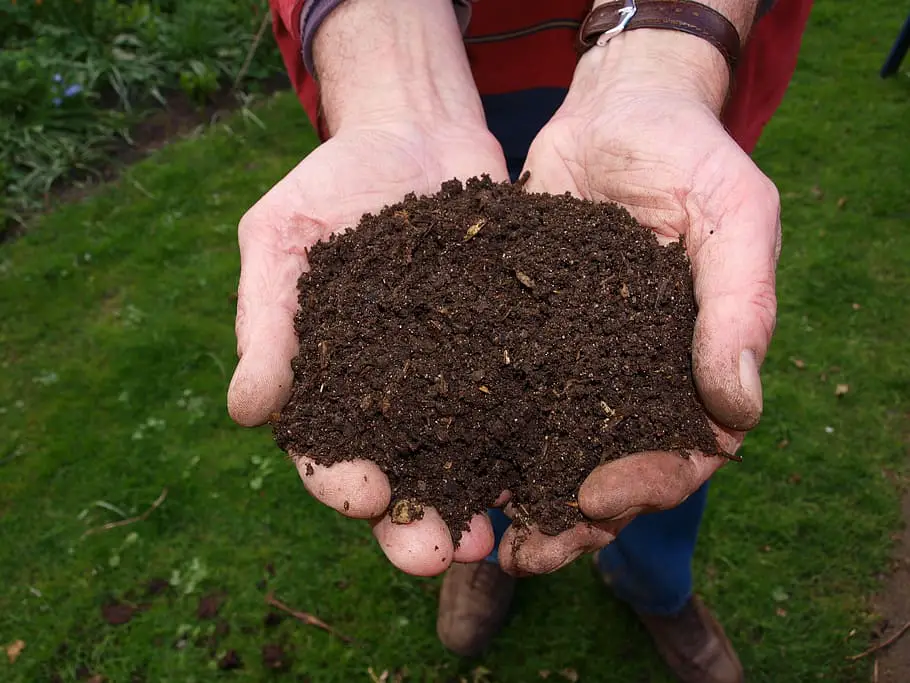
Living in a small apartment and thinking composting isn’t for you? Think again!
Composting isn’t just for people with big backyards and with a few clever strategies, you can turn your kitchen scraps into rich, nutrient-dense compost even in the smallest of spaces.
Not only is composting a fantastic way to reduce food waste, but it also creates a natural fertilizer for your indoor or outdoor plants.
Ready to give it a try? Let’s get into the nuts and bolts of DIY composting for small apartments. You’ll be a composting pro in no time!
Balancing Green and Brown Waste in Compost
Successful composting comes down to maintaining the right balance of green and brown waste. But what does this mean?
Green waste includes things like fruit and vegetable scraps, coffee grounds, and tea bags.
They’re high in nitrogen and help to speed up the composting process.
On the other hand, brown waste refers to materials like shredded newspaper, cardboard, or dry leaves.
These are high in carbon and help to maintain a good structure in your compost pile.
A good rule of thumb is to aim for a ratio of about 1 part green waste to 2 parts brown waste.
This balance will ensure your compost breaks down effectively and doesn’t develop any unpleasant odors.
Remember, composting is more of an art than a science, so don’t stress if the ratio isn’t perfect!
Using a Worm Composting System
If you’re short on space but keen to compost, a worm composting system (or vermicomposting) might be the perfect solution for you.
This involves using a special type of worm that eats through your kitchen scraps and turns them into nutrient-rich compost.
The best part? It’s virtually odorless and small enough to keep inside, making it ideal for apartment dwellers.
To get started, you’ll need a worm bin (which you can purchase or DIY), bedding like shredded newspaper or cardboard, and, of course, composting worms.
Then you simply feed the worms your kitchen scraps (avoiding things like meat, dairy, and spicy foods), and they’ll do the rest!
It’s a fascinating and effective way to compost in a small space.
Ways to Make Your Wardrobe More Sustainable
Ever take a look in your closet and wonder how it could be more sustainable? You’re not alone.
With fast fashion on the rise, our wardrobes can often feel at odds with our environmental values.
But don’t worry, making your wardrobe more sustainable doesn’t mean you have to sacrifice style.
From buying second-hand and choosing sustainable brands to caring for your clothes so they last longer, there are plenty of ways to make a positive impact.
Ready to take a step towards a more sustainable closet? Let’s dive into some tips and tricks to make your wardrobe kinder to our planet.
Shopping from Ethical Clothing Brands
In recent years, more and more clothing brands are committing to ethical and sustainable practices, and supporting these brands is a fantastic way to make your wardrobe more sustainable.
But what should you look for? Ethical brands prioritize fair trade practices, ensuring their workers are paid fair wages and work in safe conditions.
They also often use organic or recycled materials and strive to reduce their carbon footprint in their manufacturing processes.
Additionally, they typically design their clothes to be timeless rather than trendy, reducing the cycle of fast fashion.
While ethical clothing can sometimes be more expensive upfront, the quality tends to be higher, meaning your pieces will last longer.
So next time you’re in need of a wardrobe update, consider shopping from ethical brands!
Importance of Repairing and Upcycling Clothes
Another key strategy to a more sustainable wardrobe is extending the life of your clothes as long as possible.
Got a shirt with a missing button or a pair of jeans with a small tear? Instead of tossing them out, try repairing them.
Basic sewing skills can go a long way in maintaining your clothes and there are plenty of tutorials online to help you out.
What about that dress you love but just never wear? Try upcycling it into something new!
Maybe it could become a cute top or a cushion cover. You could even experiment with natural dyes or fabric paints to give a new lease of life to a stained or faded item.
Not only will you be reducing waste, but you’ll also end up with a one-of-a-kind piece that’s sure to be a talking point.
Remember, a sustainable wardrobe isn’t just about buying new pieces. It’s about loving and caring for the ones you already have!
Starting a Zero Waste Lifestyle
Have you been hearing about the zero-waste lifestyle and wondering if it’s for you?
It might sound daunting at first, but don’t worry, it’s all about taking small steps toward reducing the amount of waste we produce.
And, it’s not necessarily about producing zero waste, but rather making conscious choices to minimize our waste as much as possible.
From swapping out disposable items to learning to love leftovers, there is a multitude of ways to embark on a zero-waste journey.
Ready to take the leap and see how this lifestyle could fit into your world?
Let’s delve into the basics of starting a zero-waste lifestyle. You’ll be surprised by how achievable it can be!
Basic Steps Towards Reducing, Reusing, and Recycling
The foundation of a zero-waste lifestyle revolves around three main principles: reduce, reuse, and recycle.
They’re listed in order of importance and can guide your journey toward producing less waste.
‘Reduce’ means cutting back on the number of items you bring into your life.
Think about whether you really need something before you buy it. Can you borrow it instead? Is there a less wasteful alternative?
Next comes ‘reuse’. Instead of using single-use items like plastic bags or disposable coffee cups, invest in reusable alternatives.
This not only cuts down on waste but can save you money in the long run.
Finally, ‘recycle’. While recycling should be the last resort after reducing and reusing, it’s still an important step.
Learn about your local recycling guidelines to ensure you’re recycling effectively and maximizing the lifecycle of the products you use.
The Importance of Conscious Consumption and Refusing Unnecessary Items
While recycling often gets a lot of attention, the first step towards a zero-waste lifestyle actually starts with what you consume.
Conscious consumption means being aware of the environmental impact of the items you buy and choosing products that align with your sustainability goals.
This might mean buying less, choosing items with less packaging, or opting for second-hand items instead of new ones.
On top of this, getting comfortable with refusing unnecessary items is crucial.
Whether it’s freebies at events, plastic straws at restaurants, or excessive packaging when shopping, it’s okay to say no.
The less you bring into your life, the less you’ll ultimately have to dispose of.
Remember, every little bit counts when it comes to reducing waste!
Energy-Saving Tips for Homeowners

Ever wondered how you can cut back on your energy use at home? Well, you’re in the right place!
From insulating your home to upgrading to energy-efficient appliances, there are numerous strategies homeowners can adopt to save energy (and money!) while also reducing their carbon footprint.
Whether you’re a new homeowner or have been living in your house for years, there’s always room for improvement.
So, buckle up, and let’s explore some practical energy-saving tips for homeowners. Here’s to a greener, more sustainable home!
Understanding Energy-Efficient Appliances and Their Benefits
You might have heard about energy-efficient appliances, but what exactly are they and why should you consider them for your home?
In a nutshell, these appliances are designed to do the same job as their traditional counterparts but with less energy.
This could include anything from refrigerators and dishwashers to air conditioners and light bulbs.
The beauty of these appliances is that while they might be more expensive upfront, they can save you a significant amount of money in the long run on your energy bills.
Plus, by using less energy, they also help to reduce greenhouse gas emissions, making them a win-win for both your wallet and the planet.
Practical Tips for Reducing Daily Energy Consumption
Reducing your daily energy consumption doesn’t have to mean drastic changes.
Often, it’s the small adjustments that can make a big difference. Here are a few practical tips:
Switch off and unplug: Even when not in use, many electronics still draw power if they’re plugged in.
So, make it a habit to switch off and unplug devices when you’re not using them.
Utilize natural light: Instead of turning on the lights during the day, open your blinds and let natural light fill your space.
It’s not only energy-efficient but can also boost your mood!
Adjust your thermostat: A small adjustment in your home’s temperature can result in significant energy savings.
Try turning down your thermostat in winter and up in summer by just a few degrees.
Hang dry your clothes: Instead of using the dryer, try hang drying your clothes when possible. It’s gentler on your clothes and saves energy too!
Remember, every small change adds up over time. With a little effort, you can significantly reduce your home’s energy consumption.
Creating a Sustainable Kitchen: A Guide

Dreaming of a kitchen that’s not just the heart of your home, but also kind to the environment? You’re not alone.
More and more of us are realizing that the kitchen can be a hotspot for sustainable living ideas.
From the food we cook to the appliances we use, there are numerous ways to make our kitchens more eco-friendly.
So, whether you’re a seasoned home cook or a takeout enthusiast looking to dip your toes into home cooking, this guide is for you.
Let’s explore together how to create a sustainable kitchen that’s both functional and kind to our planet. Excited? So are we!
Benefits of Energy-Efficient Kitchen Appliances
Energy-efficient appliances aren’t just for the living room or laundry room. They’re perfect for the kitchen too!
From refrigerators and dishwashers to ovens and microwaves, energy-efficient models can drastically cut the amount of energy your kitchen uses.
This isn’t just great for the planet, it’s also great for your wallet.
Energy-efficient appliances tend to use less water and less electricity, which can lead to significant savings on your utility bills over time.
And while they might cost more upfront, they often pay for themselves in the long run through these savings.
Plus, they often come with added perks like being quieter and faster.
So next time you’re in need of a new kitchen appliance, why not consider an energy-efficient model?
Effective Waste Management Practices for the Kitchen
Waste in the kitchen is something we all struggle with, but there are a few key ways you can manage it effectively. Here are some sustainable living ideas and suggestions:
Composting: This is a fantastic way to turn your kitchen scraps into nutrient-rich soil for your plants. Fruit and vegetable peels, coffee grounds, and eggshells are all great for composting.
Recycling: Make sure to recycle whatever you can. This includes glass jars, plastic containers, and metal cans. Just make sure to clean them out before recycling!
Reducing food waste: Try to plan your meals in advance and only buy what you need. If you have leftovers, try to use them in creative ways or freeze them for later.
Reusable containers: Instead of using disposable plastic bags or cling film, opt for reusable containers to store your food.
Remember, a sustainable kitchen is not only about the appliances you use but also about how you manage your waste.
With a bit of planning and the right practices, you can significantly reduce the environmental impact of your kitchen.
Sustainable Gifts for Eco-Conscious Friends
Ever been stuck for gift ideas when shopping for your eco-conscious friends? You’re certainly not alone.
It can be a bit of a puzzle to find something that’s both thoughtful and aligns with their values.
But here’s the good news, there’s a world of sustainable gift options out there that are as kind to the planet as they are delightful to receive.
From homemade goods to ethical brands, we’ve got the scoop on finding gifts that truly keep on giving, without compromising the earth.
Ready to discover some sustainable gift ideas for your eco-conscious friends? Let’s dive right in!
Ethical Brands to Consider for Gifting
Shopping from ethical brands is a fantastic way to find sustainable gifts that your eco-conscious friends will appreciate.
These are companies that not only provide high-quality products but also prioritize environmental sustainability and fair working conditions.
For instance, you might consider brands that use organic and sustainably-sourced materials, practice fair trade, or donate a portion of their profits to environmental causes.
Whether it’s eco-friendly skincare, sustainably-produced clothing, or zero-waste home goods, there’s an ethical brand out there to suit every taste.
DIY Sustainable Gift Ideas
If you love to get creative, why not consider making your own sustainable gifts?
Not only does this allow you to personalize your present, but it can also be a great way to minimize packaging and reduce waste. Here are a few DIY gift ideas:
Homemade food: Whether it’s a jar of your famous salsa, a batch of homemade cookies, or a loaf of freshly baked bread, homemade food gifts are always a hit.
Sewn goods: If you’re handy with a sewing machine, consider making reusable shopping bags, tea towels, or beeswax wraps.
Potted plants: If you have a green thumb, why not pot a cutting from one of your plants? It’s a gift that keeps on growing!
DIY beauty products: From homemade lip balms to bath salts, DIY beauty products can be a luxurious treat that’s also eco-friendly.
Remember, the most sustainable gift is one that’s truly wanted and will be used, so think about your friend’s interests and needs as you choose or create your gift.
Eco-friendly Beauty Brands to Support
Are you looking to support beauty brands that are as committed to the planet as they are to helping you look and feel your best?
The world of beauty has seen an influx of brands that not only offer high-quality products but are also dedicated to sustainability.
These eco-friendly beauty brands are showing that it’s possible to prioritize both the environment and your skincare routine.
So, whether you’re a skincare junkie, a makeup enthusiast, or someone just dipping your toes into the world of beauty products, let’s explore some eco-friendly beauty brands that deserve a place on your shelf.
Ready to make your beauty routine a little greener? Let’s go!
Understanding the Importance of Cruelty-Free and Sustainable Ingredients
Beauty products can be a tricky business when it comes to sustainability and ethics.
But let’s simplify it a bit: opting for cruelty-free and sustainably sourced ingredients is a solid step in the right direction.
But what does that mean exactly?
Cruelty-free products are developed without any tests on animals. This is a crucial aspect as it shows respect for all life forms.
In addition, it’s important to note that animal testing isn’t a guarantee of product safety for humans, making it unnecessary.
Sustainable ingredients, on the other hand, are those that are sourced and produced in ways that do minimal harm to the environment.
This could mean using organic ingredients, sourcing ingredients locally to reduce transportation emissions, or ensuring that the harvesting of the ingredients doesn’t harm the local ecosystem.
By choosing products that are both cruelty-free and use sustainable ingredients, you’re casting a vote for ethical and environmental responsibility in the beauty industry.
Spotlight on Some Leading Eco-Friendly Beauty Brands
The beauty industry is increasingly brimming with brands that prioritize eco-friendly practices. Here are a few you might consider:
Axiology: This beauty brand is known for its cruelty-free and vegan lipsticks. The products are made with natural ingredients, and even the packaging is eco-friendly!
Herbivore Botanicals: From face oils to bath salts, this brand offers a range of natural skincare products. They’re also committed to organic and food-grade ingredients.
Biossance: Biossance is a skincare brand that utilizes biotechnology to create safe and effective skincare products. They’re vegan, and cruelty-free, and put sustainability at the heart of their business.
Elate Cosmetics: A brand offering a wide range of makeup products with a focus on sustainable practices. They use organic ingredients and even offer refillable packages.
Remember, supporting eco-friendly beauty brands is an excellent way to ensure your beauty routine doesn’t come at the cost of the environment.
Do some research, read labels, and find brands that align with your values.
As the temperatures start to dip, it’s natural to crank up the heat and indulge in cozy indoor activities.
But this comfort often comes with increased energy usage, impacting both our wallets and the environment.
So, how can we stay warm and snug while still keeping our energy consumption in check? Glad you asked!
There are actually a ton of sustainable living ideas that are simple and effective ways to reduce energy usage in the colder months without sacrificing comfort.
Ready to discover how you can make your winter days more sustainable?
Let’s unravel the warmth of these energy-saving practices together!
Utilizing Home Insulation and Efficient Heating Systems
A warm and cozy home in the winter starts with effective insulation.
Good insulation slows the rate at which heat escapes from your home, making it an essential factor in energy conservation.
Whether it’s wall, loft, or floor insulation, investing in this can lead to considerable savings in your energy bills and a significant reduction in your carbon footprint.
But let’s not stop there. Combining insulation with an efficient heating system can further optimize energy usage.
Consider upgrading to a more efficient boiler or furnace, if possible. You might also look into options like programmable thermostats, which allow you to manage heating according to your schedule, or smart thermostats, which learn your habits and adjust the heating automatically.
Remember, sometimes it’s the initial investments that can lead to long-term energy-saving benefits.
Tips for Conserving Energy During the Cold Months
Okay, so we’ve covered insulation and heating systems. Now let’s talk about a few more simple, yet effective ways you can conserve energy during those cold months:
Layer up: Instead of reaching for the thermostat as soon as you feel a chill, try putting on another layer. Warm socks, cozy sweaters, and fluffy blankets can do wonders!
Take advantage of sunlight: Open your curtains during the day to let in natural light and heat. Close them as soon as the sun goes down to keep the warmth in.
Seal any drafts: Drafty doors and windows can let a surprising amount of cold air into your home. Sealing these can make a significant difference in maintaining a warm indoor temperature.
Maintain your heating system: Regular maintenance can keep your heating system working efficiently. This could be as simple as bleeding your radiators or getting an annual service for your boiler.
Remember, every small action adds up when it comes to energy conservation.
Start implementing these practices, and you’ll be well on your way to a more sustainable and cozy winter!
Guide to Sustainable Gardening Practices
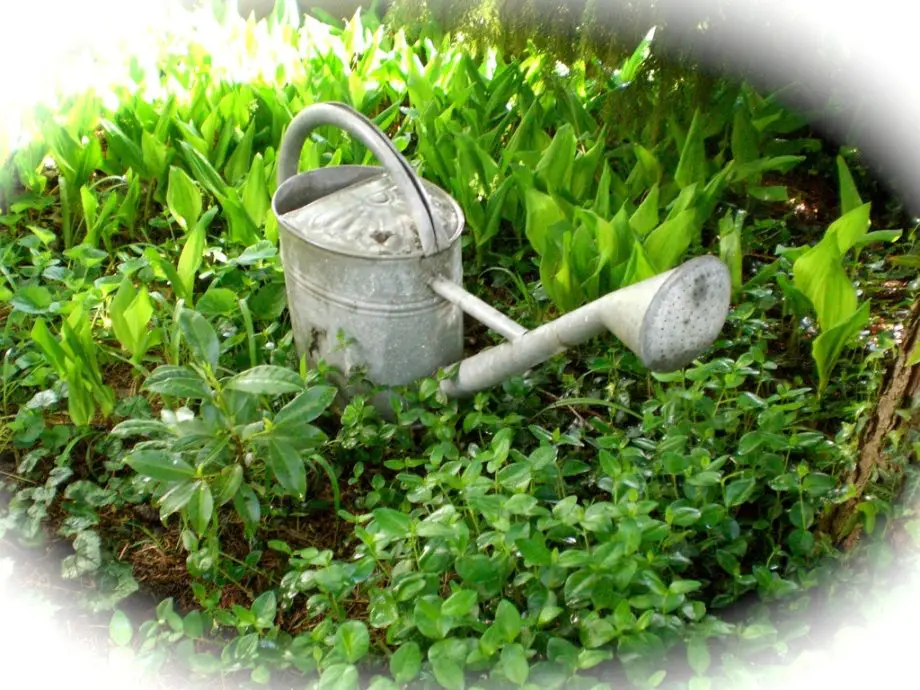
Did you know that your garden can be a vibrant haven of sustainability? That’s right!
Your green space, whether it’s a sprawling backyard or a small window box, offers numerous opportunities to cultivate a healthier environment.
This isn’t just about growing your own food (though that’s a fantastic start); it’s about employing practices that conserve resources, enhance soil fertility, and support local ecosystems.
If you’ve been thinking about greening your thumbs and dipping them into the world of sustainable gardening, you’re in the right place!
So, pull on those gardening gloves and join us as we dig into a guide full of eco-friendly gardening practices. Let’s grow together, shall we?
Water Conservation Methods in Gardening
Gardening is a delightful pastime, but it can also be a thirsty one. So how can you keep your plants happy while also conserving water?
Here are a few sustainable living ideas to help you make your garden a paragon of water efficiency:
Choose the Right Plants: Start by choosing plants that are well-suited to your local climate. Native plants and drought-tolerant varieties are great choices as they require less water to thrive.
Water Wisely: Water your plants early in the morning or late in the evening when temperatures are cooler to reduce evaporation. Also, focus on the roots where water is most needed, and avoid overwatering.
Mulch, Mulch, Mulch: Covering the soil with mulch can help retain moisture, control weeds, and regulate soil temperature. Plus, as organic mulch breaks down, it enriches your soil.
Collect Rainwater: Set up a rain barrel to collect water during rainfall, which you can then use to water your plants. It’s nature’s own irrigation system!
Importance of Organic Farming and Composting
Organic gardening goes beyond just avoiding chemical fertilizers and pesticides.
It involves cultivating an ecosystem that sustains and nourishes plants, soil microbes, and beneficial insects.
One of the cornerstones of organic gardening is composting.
Composting turns your kitchen scraps and yard waste into nutrient-rich humus, a treat for your plants and a booster for soil health.
It reduces the amount of waste going into landfills and gives your plants a nutrient boost.
It’s like a recycling program right in your backyard!
Also, consider integrating other organic practices into your garden, such as using natural pest control methods (like encouraging beneficial insects and using homemade sprays) and rotating crops to maintain soil health.
Remember, sustainable gardening is a journey, not a destination.
So, keep experimenting, learning, and growing, and your garden will reward you with its abundant beauty and bounty.
Benefits of Shopping from Local Businesses
When it comes to shopping, sometimes the most sustainable choice is also the closest to home.
Shopping locally is about more than just supporting small businesses in your community (though that’s a big part of it!).
It’s also about reducing your carbon footprint, promoting economic stability, and fostering a stronger connection with your neighborhood.
By choosing to spend your money at local businesses, you’re investing in your community and the environment.
Intrigued about how shopping bags can transform into power-packed tools for local sustainability?
Let’s dive in and uncover the many benefits of shopping locally. Ready to embark on a neighborhood shopping adventure? Let’s go!
Economic and Environmental Benefits of Supporting Local Businesses
First off, let’s talk dollars and sense. When you shop locally, more of your money stays within your community.
Local businesses often source their goods locally, pay local taxes, and hire local people.
This means your dollars circulate within your community, promoting local economic growth and creating jobs.
But the benefits of shopping locally extend beyond economics. It’s also a greener choice.
Locally produced goods require less transportation, which reduces carbon emissions.
Plus, small local businesses tend to set up shops in town or city centers, as opposed to developing on the fringe.
This means they contribute less to sprawl, habitat loss, and pollution.
And let’s not forget the unique character local businesses add to our communities.
They provide a diverse range of product options and contribute to the distinct personality of our neighborhoods, making them a better place to live.
How to Find and Support Local Businesses in Your Area
Okay, so you’re sold on the idea of shopping locally. But how can you start supporting local businesses in your area?
Explore Your Neighborhood: Sometimes, the best way to find local businesses is to take a walk or bike ride around your neighborhood. You might be surprised at what you find!
Farmers’ Markets: These are fantastic places to find locally-grown produce, and often, other locally-produced goods. Plus, shopping at farmers’ markets is a great way to meet the people who grow your food.
Online Directories: Look for online directories of local businesses in your area. Many cities and towns have these available.
Word of Mouth: Ask friends, family, and neighbors for recommendations. They might know about hidden local gems.
Support Them Online: Follow your favorite local businesses on social media and share their posts. Leave them positive reviews online. These actions can make a big difference!
Remember, every local purchase you make is a vote for the kind of community you want to live in.
So next time you’re thinking about making a purchase, think local first!
Making Your Office Environment-Friendly

Can your workspace make a difference in the fight against climate change? Absolutely!
Many of us spend a large chunk of our time in offices, and this makes them prime spaces for implementing sustainable living ideas and green practices.
Making your office eco-friendly isn’t just about saving the planet, though.
An environment-friendly office can also boost productivity, foster creativity, and even save money in the long run!
If you’ve been searching for ways to transform your office into a greener, cleaner, and more efficient space, you’ve found the right place.
Ready to suit up for some eco-friendly office modifications? Let’s set the stage for sustainability!
Encouraging Recycling and Reducing Paper Usage at Work
Ever thought about the amount of paper and other resources we consume at work?
Those stacks of paper, single-use coffee cups, and plastic cutlery can add up to a significant amount of waste.
But, the good news is, there’s a lot you can do to reduce waste and encourage recycling in your office!
Go Digital: Transition to a paperless office. Digitize files and use electronic communication for memos and announcements.
Double-Sided Printing: If printing is necessary, set all printers to print on both sides by default to save paper.
Recycling Stations: Make recycling as easy as throwing something away by placing clearly marked recycling bins next to every trash can.
Green Supplies: Opt for eco-friendly office supplies like refillable pens, recycled paper, and compostable utensils.
Waste Reduction Education: Encourage employees to reduce waste by providing education about recycling and waste reduction.
Implementing Green Spaces and Promoting Telecommuting
While reducing waste is a fantastic start, there’s more to a green office than recycling bins and digital files.
Implementing green spaces and promoting telecommuting can have a huge impact as well!
Indoor Plants: Green up your office with indoor plants. They purify the air, reduce stress, and can even boost productivity. Plus, they make the office look more inviting!
Natural Light: Make use of natural light as much as possible. It’s not only eco-friendly but also healthier and can improve mood and productivity.
Telecommuting: Allowing employees to work from home can significantly reduce carbon emissions caused by commuting.
Plus, it can increase employee satisfaction and reduce office space requirements.
Green Meetings: Promote virtual meetings or carpooling for off-site meetings to reduce carbon emissions.
These steps can help create a healthier, more sustainable work environment, benefitting both the planet and your team.
With a bit of creativity and commitment, we can transform our offices into spaces that support our well-being and our planet’s health!
Sustainable Living Practices for Students

Being a student is a whirlwind experience. Balancing classes, homework, extracurriculars, and social life is challenging enough.
But what if you also want to reduce your carbon footprint and live a more sustainable life? Does it sound like too much?
Well, I’m here to tell you it’s definitely not. Sustainability and student life can blend together seamlessly, creating a lifestyle that not only respects Mother Earth but also suits your busy schedule.
Let’s get started on your journey to becoming a student super-star in sustainability!
Easy Sustainability Tips for Dorm Living
Living in a dorm presents unique opportunities to incorporate sustainable living ideas into your daily life.
Small changes can have a big impact when it comes to being eco-friendly.
Power Down: When you leave your dorm room, remember to switch off lights and unplug electronic devices.
This simple habit not only conserves energy but also saves on your electricity bill.
Water Usage: Try to keep showers short and turn off the tap while brushing your teeth to conserve water.
Buy Smart: Choose eco-friendly and energy-efficient appliances for your dorm. It might be a little bit pricier upfront, but you’ll save money (and the planet!) in the long run.
Recycle: Make sure to separate your trash correctly and take advantage of recycling programs on campus.
Mindful Eating: If you’re on a meal plan, try to only take what you can eat to reduce food waste.
Opt for vegetarian or vegan options occasionally to lower your carbon footprint.
Importance of Digital Resources and Secondhand Items
The life of a student is usually synonymous with being budget-conscious, but did you know that some of your cost-saving measures could also be sustainable practices?
Digital Resources: Save money and trees by using digital textbooks and resources whenever possible.
Many professors also appreciate the switch to digital assignments and note-taking.
Secondhand Shopping: From textbooks to furniture to clothing, buying used is a great way to save money and reduce waste.
Check out local thrift stores, online marketplaces, or campus exchange programs.
Sell or Donate: When you no longer need something, don’t just throw it away.
Sell it, donate it, or find a recycling program that will take it. It’s a win-win for you, someone else, and the environment!
Being a student doesn’t mean you can’t live sustainably.
In fact, it’s the perfect time to start forming eco-friendly habits that will last a lifetime.
So dive in, and enjoy the journey toward sustainability!
Recycling Hacks: Creative Ways to Reuse Household Items
Do you ever look at your trash bin and wonder if there’s something more that could be done with all that stuff?
Well, you’re on the right track. With a dash of creativity and a splash of DIY spirit, you can turn your “trash” into treasures!
This section is all about finding clever and practical ways to give new life to the stuff you’d usually throw away.
So, if you’re ready to go on a green DIY adventure, read on for some fun and innovative recycling hacks to repurpose your household items. Your trash can will thank you, and so will the planet!
Fun DIY Projects Using Common Household Waste
Imagine the joy of transforming an everyday item from your trash can into something useful, beautiful, or even quirky.
It’s not just fun; it’s also a great way to reduce waste and save money.
Glass Jars: Finished with that jar of pasta sauce? Rinse it out, and it can become a nifty storage container, a homemade candle holder, or a mini terrarium. The possibilities are endless!
Old T-Shirts: A little wear and tear don’t mean a T-shirt is ready for the trash. Cut it into strips to make a rag rug, turn it into reusable shopping bags, or make it into a cozy pet bed.
Cardboard Boxes: With some creative cuts and folds, a cardboard box can be a kid’s dream come true. Create a toy car, a dollhouse, or a castle. It’s also perfect for DIY storage solutions.
Plastic Bottles: Convert your plastic bottles into self-watering planters, bird feeders, or even a vertical garden.
Importance of Upcycling in Waste Management
Upcycling, or creatively reusing items that would otherwise be discarded, plays a critical role in effective waste management.
Reducing Landfill Waste: Upcycling gives items a second life, reducing the amount of waste sent to landfills and decreasing the need for new goods production.
Conserving Natural Resources: It conserves resources by reducing the demand for raw materials to manufacture new products.
Lowering Carbon Footprint: It decreases the carbon footprint associated with producing new goods, as upcycling generally requires less energy and fewer resources.
Promoting Creativity: Beyond its environmental benefits, upcycling is a wonderful way to unleash creativity and add personal touches to your space.
Through upcycling, not only can we help the planet, but we can also turn the mundane into the magnificent!
Give it a go; you might surprise yourself with your own inventive genius.
Reducing Food Waste at Home

Ever been guilty of buying a bit too much at the grocery store, only to end up throwing out uneaten food?
It’s an all-too-common scenario, but the good news is it’s completely avoidable.
Food waste is a substantial issue, but by making some thoughtful changes at home, you can play your part in combating it.
This section serves up some practical, easy-to-apply strategies to keep food waste to a minimum and to help you fully enjoy everything you buy.
So, let’s dig in and find out how we can nourish ourselves without starving our planet!
Techniques for Effective Meal Planning and Storage
Meal planning and proper food storage are your trusty allies in the battle against food waste.
Meal Planning: It’s a simple technique that involves planning your meals ahead of time.
When you know what you’re going to eat, you can buy just the ingredients you need.
This helps avoid impulsive purchases that may not get used before they spoil. It also saves you time deciding what to cook each day!
Shopping List: Always go shopping with a list. This helps ensure you don’t forget anything and prevents you from buying items you don’t need.
Understanding Food Expiration Dates: Learn the difference between “use-by,” “best-by,” and “sell-by” dates. A lot of food is wasted because of confusion about these labels.
Proper Food Storage: Store your food correctly to prolong its life.
For instance, did you know apples last longer in the fridge, or that onions should be kept in a cool, dark place but not with potatoes?
A little research can lead to less waste.
Understanding the Role of Composting in Reducing Food Waste
Composting is a fantastic way to reduce food waste, turning something negative into a positive!
What Can Be Composted: Most kitchen scraps like fruit and vegetable peels, coffee grounds, tea bags, and eggshells are compostable. Even your wilted flowers and houseplant trimmings can join the mix!
Benefits of Composting: Composting these materials helps reduce the amount of garbage sent to landfills.
Plus, the compost can enrich the soil in your garden or houseplants, improving plant health and growth.
How to Compost at Home: You don’t need a large garden to compost.
Even apartment dwellers can compost using countertop compost bins or worm composting systems.
By embracing these practices, you can help reduce food waste and contribute to a healthier planet right from your kitchen!
Final Thoughts On Sustainable Living Ideas

Navigating the path to sustainable living might feel like a maze at times, but remember, every small step makes a big difference.
It’s not about achieving perfection, but about making conscious choices that lead to gradual change.
You’ve armed yourself with a multitude of sustainable living ideas and now, it’s time to set them in motion.
You might even be considering off-grid living which is a way of life that evokes a sustainable lifestyle.
Happy journeying towards a more sustainable and conscious lifestyle.
Remember, your efforts today are an investment in a healthier, greener world for future generations.
Let’s celebrate every progress, no matter how small, and keep striving for a better tomorrow.
Sustainable living means understanding how our lifestyle choices impact the world around us and finding ways for everyone to live better and lighter.




